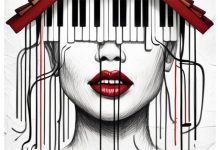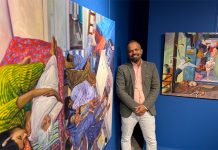The atlas and mirror are apt references for today’s society.
In a world where some borders are being blurred by the Internet, while others are becoming ever more defined by the likes of Donald Trump and Brexit, there is a clear need for reference points that will guide those in search of direction.
Today, with social media as the medium of self-exposition, life stories are reflected in a large virtual mirror of individual expression. If you look long enough in the mirror, the lines on your face become part of the natural terrain. Regardless of whether you like what’s being shown in the mirror, you have to accept it, warts and all.
The Singapore Biennale 2016 marries the atlas and mirror, offering outward and inward perspectives; a duality of positions that draws upon one’s own individuality in a world that seems to be verging on virtual homogeneity.
Singapore Biennale 2016 — An Atlas Of Mirrors presents works that probe the minds of creators from around the region, who see the world in their own special way, and that, in turn, encourage reflection. Taking in such a wide array of views too quickly is going to be confusing and wouldn’t be doing the works, the curatorial process and yourself justice. Each piece should be absorbed and the creator’s intent appreciated. Preferably soaked in over time.
A Selection Of Works
Qiu Zhijie’s One Has To Wander Through All The Outer Worlds To Reach The Innermost Shrine At The End is a room of maps and a hand-blown glass bestiary that beckons you into legends and myths that spark one’s imagination.
On the other hand, Pala Pothupitiye’s Other Map Series reflects on the recent violent history of Ceylon and Sri Lanka by working them in as colourful elements onto an official map.
Pannaphan Yodmanee’s Aftermath connects science and Buddhism and questions faith in a sprawling work of minute detail.
Thousands of incense sticks assembled in a wall of scent presents a simple idea with deeper meaning. Hemali Bhuta’s Growing is the concept of the swirling fragrance of one stick contributing to a larger perfumed environment.
Made Djirna’s spectacular three-dimensional presentation, Melampaui Batas (Beyond Boundaries) bring the spiritual and the physical together involving a boat, a tree and hundreds of terracotta figurines.
Titarubi’s History Repeats Itself is a quietly haunting swipe at materialism and its continued hold on society.
Gregory Halili’s Karagatan (The Breadth Of Ocean) looks back at you; an eerie row of eyes of villagers from the coastal regions of the Philippines painted on mother-of-pearl.
In the Chapel of the St Joseph’s Institution that has been converted into the Singapore Art Museum (SAM), Deng Guoyuan has recreated Noah’s Garden II, a labyrinth of mirrors and artifical flora.
It is mesmerizing, confusing, quietly loud, reflectively noisy, inspiring, and you’d best not wear a short skirt as you walk on a floor of mirrors.
Close to 60 works of art are spread through the SAM, across Queen Street, at SAM At 8Q, and other venues. The entry fee of $20 is well spent ($15 if you’re Singaporean), and you may well wish to consider getting a multiple entry pass.
The swirling silver fish circling the net, in Sharmiza Abu Hassan’s The Covenant reflects our behaviour to gravitate towards the virtual world, drawn hypnotically into its worldwide web.
There will be the favourites you will return to at the Singapore Biennale, and along the way some of the art pieces of doubtful relevance may begin to resonate.
It might have been helpful to understand how Creative Director Susie Lingham and each of the curators decided on the final selection of works. But, then again, maybe it’s good that you’re allowed to stretch your own imagination without instructional aids.
Singapore Biennale 2016
Until 26 February 2017
Organised by Singapore Art Museum
Commissioned by National Arts Council
www.singaporebiennale.org























